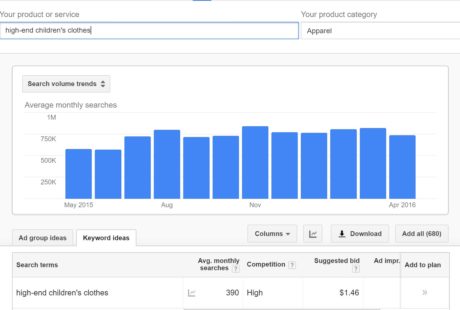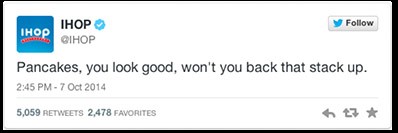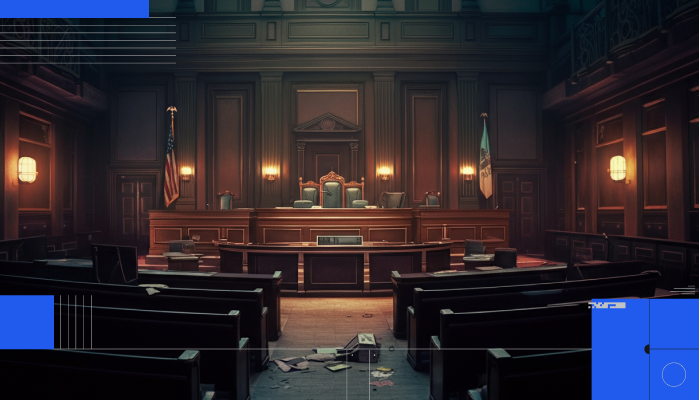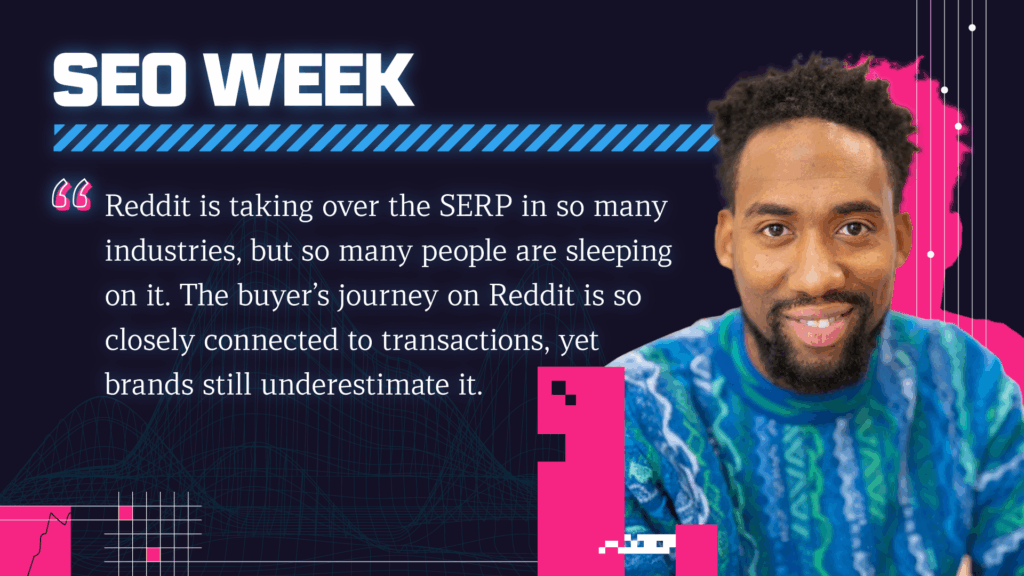I hope I don’t get fired for this post.
However, I have decided to choose possible copywriting martyrdom in order to save other copywriters from making the same mistakes that I did. Let’s start at the beginning.
When I first got hired at iPullRank, I was fresh out of ad school. Like most ad school grads, I rode in on my high-horse of unbridled creativity, and an ego gained from a few blog posts that had gone viral. I thought I had this copywriting gig in the bag. My CEO is one of those Red Bull types who “gives you wings” right off the bat, so I received my first project just a couple of days into my first week. I approached my first writing assignment with the confidence that I’ll be knocking a whole slew of socks off with my witty one-liners.
Crickets.
In other words, nobody read my blog post, except my mom – but I had to email it to her and remind her to read it, twice. I was copy-crushed. I had funneled my creativity, wit and charisma into this piece, but it garnered zero clicks for our client.
In the digital marketing industry, numbers talk. Your client doesn’t care that you poured your heart into a campaign or the amount of “creative introspection” that went into your work. Clients care about traffic, shares, likes and conversions, and my blog got none.
After nursing my dented, Edgar Allen Poe-sized ego, I marched over to my boss’s desk and demanded that he tell me what I did wrong. After he gave me a look that clearly indicated that I was being dramatic and that he wanted to get back to his sandwich, here’s what he said.

Mistake #1: “Where are your primary and secondary keywords?”
I was aware of how keywords worked, but this was the first time I learned that there was a strategic methodology behind how copywriters should be inserting them into their writing. In the past, I littered keywords throughout my writing with no specific placement strategy – it was like SEO mix n’ match.
That practice works well if your mom is the only audience you’re looking to attract.
The proper utilization of primary and secondary keywords is vital to the success of your copy. Primary keywords are the most impactful keywords because these are the words/phrases that your target customer will use to search in your client’s product category. Primary keywords should be included in the page title, URL, image alt-text and H1 of your content. Additionally, do your best to include primary keywords towards the beginning of the page title and H1, and always before the client’s brand name – it takes some finesse but they don’t call us wordsmith’s for nothing.
While secondary keywords (keywords that get less search volume) aren’t as important for SEO as primary, they do increase the chances that visitors will click through to your post. Secondary keywords work best in the meta descriptions and social copy. As explained in this post by MOZ, you should aim for high search volume and low difficulty. As a creative, I try to imagine that I’m inside the consumer’s head. What will this person type into the search engine when searching for my client’s product or service category, even if they’ve never heard of my client’s brand? While you’re not expected to be a psychic, there is a fair amount of tactical analysis involved – my favorite keyword resource is the Google Keyword Planner Tool. It provides average monthly searches, competition, and additional keywords by relevance.

In this case, “kids designer clothes” seems to be the best keyword phrase to include in the page title, H1 and URL for my fictitious luxury children’s apparel client. While the keyword phrases “kids clothes” and “baby clothes” received higher search volume, “kids designer clothes” is more specific and will also rank for kids clothes.

“High-end children’s clothes” seems to be a good fit for a secondary keyword phrase because while the search volume isn’t as high, it’s still getting a fair volume of monthly searches and will be attractive to the reader from a click-through standpoint.
“But it all sounds so robotic.” I complained to my CEO.
If you understand how Google uses synonyms when displaying search results, it doesn’t have to be. In the early days of SEO, Google only displayed results that included exact matches of what’s typed into the Search Engine. This was largely the cause for keyword-stuffed, repetitive copy by marketers who took short-cuts to achieve rankings. These days, keyword-stuffing is likely to get you smacked with a dreaded, Google penalty and is a useless tactic. Now, Google displays exact match results as well as matches with likely synonyms for what’s typed into search, even if the exact keyword typed isn’t included in the result.
What does this mean for you? It eliminates the need to sound like a rank-hungry robot. You are able to utilize variations and synonyms of the primary keyword and still show up on the SERP. For example, “kid’s designer clothes” can be diversified with phrases like “children’s luxury apparel” or “kid’s designer jeans”, which allows you to write copy that flows easily and entertains the reader – and still show up on the SERP.
The natural inclusion of keywords throughout your copy is an art, not a science – it can be learned. For example, if you’re targeting keyword phrases “kid’s designer clothes” and “high-end children’s clothes”, insert them into your writing in a way that doesn’t sacrifice the natural flow of your piece, as follows:
If you’re looking for the best kids’ designer clothes that NYC has to offer, you’ve come to the right place. From sassy suspenders to swoon-worthy sundresses, our collection combines high-end children’s fashion with functional kid’s clothes, shoes, and accessories.
It may not be Shakespeare, but it’ll boost your client’s rankings.
Mistake #2 – “Where’s the CTA?!”

Who knew that these three letters would begin such an internal battle for me. I had always been wary of writing that sounded like an infomercial, so I was more than a little reluctant to add brazen CTAs in my writing. It took a couple of failed blog posts before my boss’s words seared into my brain.
The definition of copywriting is writing with an intent to sell a product or a service. It doesn’t matter which stage of the funnel you’re writing for – your copy should ignite a domino effect that results in increased sales for your client.
The more I thought about it, I realized that I didn’t despise CTAs as much as I despised the way I had seen them being used in the past. We’ve all experienced content marketing where two sentences down the page, they’re already asking you to order a “free” trial for the low price of $29.99. Yes, those CTAs are bad and mostly, don’t work.
My boss was nice enough to show me great examples of CTAs that were so expertly written that I was surprised to learn that it was content marketing at all. If utilized correctly, a CTA should provide a clear solution for your customer’s need. While the reader may not have realized it was a need until they read your post, it’s a need nonetheless. If your post is thoroughly informative, clear and concise, the CTA should simply be the final nudge that your reader requires to take the next step.
A well-written CTA should satisfy your client and their customer.

This is making me want to build a ManPack and I’m not even a man.
Mistake #3 – “I can tell you wrote this”

I used to think this was a good thing. Every time my boss would state this observation, I would give myself an internal high-five while maintaining enough composure to reply “Oh, really?” Again, it took several blog posts for me to finally understand that sounding like myself wasn’t the goal. As hard as it may be to accept this, your voice now belongs to your client. The purpose of your writing is to spread the word on your client’s brand in an effective way.
Your client isn’t paying you thousands of dollars to broadcast your innermost thoughts and perspectives to the masses – they’re paying you to sell their product.
I remember a time when I was assigned to write an E-Book for a tech-startup client that had a very technical and no-nonsense brand voice. I was quite proud of my first draft until the client ripped it to shreds and I was left to pick up the proverbial pieces. I thought my writing had been clever and engaging with an abundance of zing-worthy one-liners – what had gone wrong? I finally came to the realization that while the E-Book was an interesting read, it sounded nothing like my client.
A 30-year old, snarky woman that loves Orange is the New Black is not who a Silicon Valley startup wants to sound like, no matter how funny or interesting I think I am.
Now, the favorite part of my job is to create or extrapolate on a client’s brand voice – it’s like solving a mystery. The client offers me “clues” by describing the essence of their brand, what their philosophy and core values are, who their audience is and where they aspire to be. Then, I dissect this information to build a brand voice that is distinct and engaging enough to cut through their market space and reach their desired audience.
On the other hand, if you’re worried about losing your own voice, start a blog.
Mistake #4 – “There’s more to copywriting than writing”

As a new copywriter, you may think that you’re limited to only the copy aspect of content marketing. If you believe this, you’re missing out. Content marketing comes in all shapes and sizes – from infographics and experiential campaigns to interactives and video; you should have a hand in all of it. As a copywriter for a marketing agency, especially a startup, I have quickly learned that the words “that’s not my job” does not exist. Thank goodness for that because some of my favorite projects had nothing to do with writing at all.
I started my position as a copywriter thinking that I was to be a writing robot who had little to do with brainstorming and design. After my boss broke that initial stronghold, he assigned me to brainstorm for projects like infographics, video campaigns, and interactives. I had to funnel my creativity in a different way and it was exciting! While I wasn’t expected to design or develop the experiences, I had a large part in the initial concept – and it wasn’t that much different from ideating for a piece of copy.
One of my favorite, “out of the box” copywriting experiences was my role in our City Wars interactive campaign for a real estate client. We incorporated the wildly popular, Star Wars: The Force Awakens movie to market a website for the search and sale of real estate. Initially, I had no idea why I was being asked to sit in on a brainstorming session about Star Wars, but the creative energy of the room was contagious and I was able to contribute to the final idea. This is what my boss meant by there’s more to copywriting than just writing. It’s about strategy, ideation, analysis and research, and it’ll push you past your creative boundaries – only if you allow yourself to be pushed.
Mistake #5 – “But, what’s the point?”
As a lover of expertly crafted sentences and clever one-liners, it’s easy for me to get lost in my writing. However, the most important thing I’ve learned in my role as a marketing copywriter is that you can never lose sight of the client’s overall campaign objective. Whether it’s to raise awareness, reposition their brand, or to simply gain conversions, your writing needs to always tie back to that high-level goal. Yes, copywriting is a creative field, but being creative just for the sake of it is a good way to waste your client’s money and have nothing to show for it.
Have you ever watched a Super Bowl ad that was wildly entertaining only to not recall which brand the commercial was advertising? That no-name brand just flushed millions of dollars down the toilet, because they cared more about being creative than aligning themselves with their core strategy. While I’m not saying that you shouldn’t be creative as a copywriter, the real talent is the ability to seamlessly blend the two so that there’s no detectable separation.
I’ve had many hiccups, stumbles and WTF moments on my road to becoming a full-fledged copywriter. While I haven’t reached copy-nirvana quite yet, I’m confident that the mistakes and lessons are what will eventually get me there. I hope this post is an eye-opening read that reveals this one thing – in the quest to become an expert-level copywriter, being a good writer is just the beginning.
About the Author: Dinuki Suraweera works as a copywriter for NYC digital marketing agency, iPullRank. She enjoys writing about lifestyle, culture, and the human condition. She is featured on the HuffPost, Elite Daily, and the Thought Catalog.







